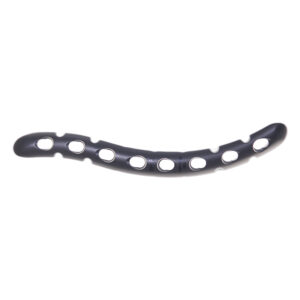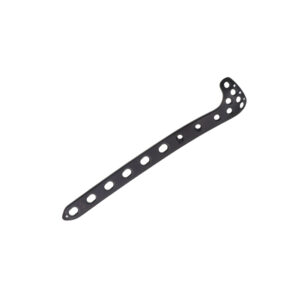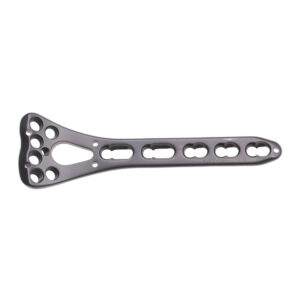Keterangan
Pelat Pengunci Humerus Proksimal
Q&A
Q1: What is a Proximal Humeral Locking Plate used for?
A1: It is designed for the fixation of fractures of the proximal humerus, including 2-, 3-, and 4-part fractures of the humeral head and surgical neck.
Q2: What are the advantages of a locking plate compared to a conventional plate?
A2: The locking mechanism provides angular stability, reduces the risk of screw loosening, and allows for better fixation in osteoporotic bone.
Q3: What is the typical material of a Humerus Locking Plate?
A3: It is commonly made of medical-grade titanium alloy (Ti-6Al-4V) or stainless steel for biocompatibility and strength.
Q4: Can the PHILOS Plate be used in osteoporotic bone?
A4: Ya, the locking design offers superior fixation in osteoporotic bone, which is especially beneficial in elderly patients.
Q5: What screw types are used with the Proximal Humeral Locking Plate?
A5: It uses a combination of locking head screws and cortical screws, allowing both angular stability and compression where needed.
Q6: How is the plate anatomically designed?
A6: The plate is pre-contoured to match the proximal humerus anatomy and features multiple screw holes angled to optimize fixation in the humeral head.
Q7: Can this plate be used for minimally invasive surgery?
A7: Ya, certain plate designs support minimally invasive percutaneous plate osteosynthesis (MIPPO) techniques to reduce soft tissue damage.
Q8: What are the typical plate lengths available?
A8: The plates come in various lengths, generally ranging from 3 ke 10 holes, depending on fracture pattern and patient anatomy.
Q9: What complications may occur with Humerus Locking Plates?
A9: Common issues include screw penetration into the joint, subacromial impingement, or loss of reduction if improperly fixed.
Q10: How long is postoperative rehabilitation after PHILOS plate fixation?
A10: Passive motion usually begins after 1–2 weeks, with gradual strengthening at 6–8 weeks, depending on fracture healing and patient tolerance.




